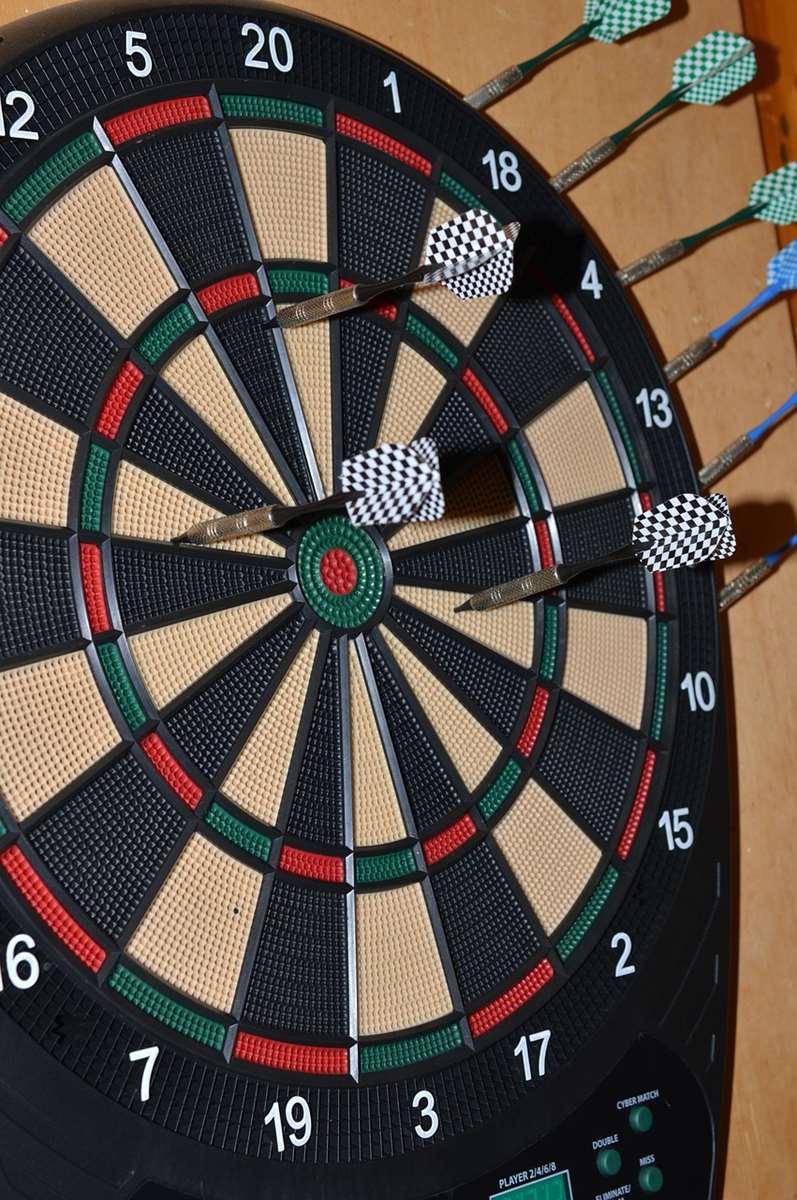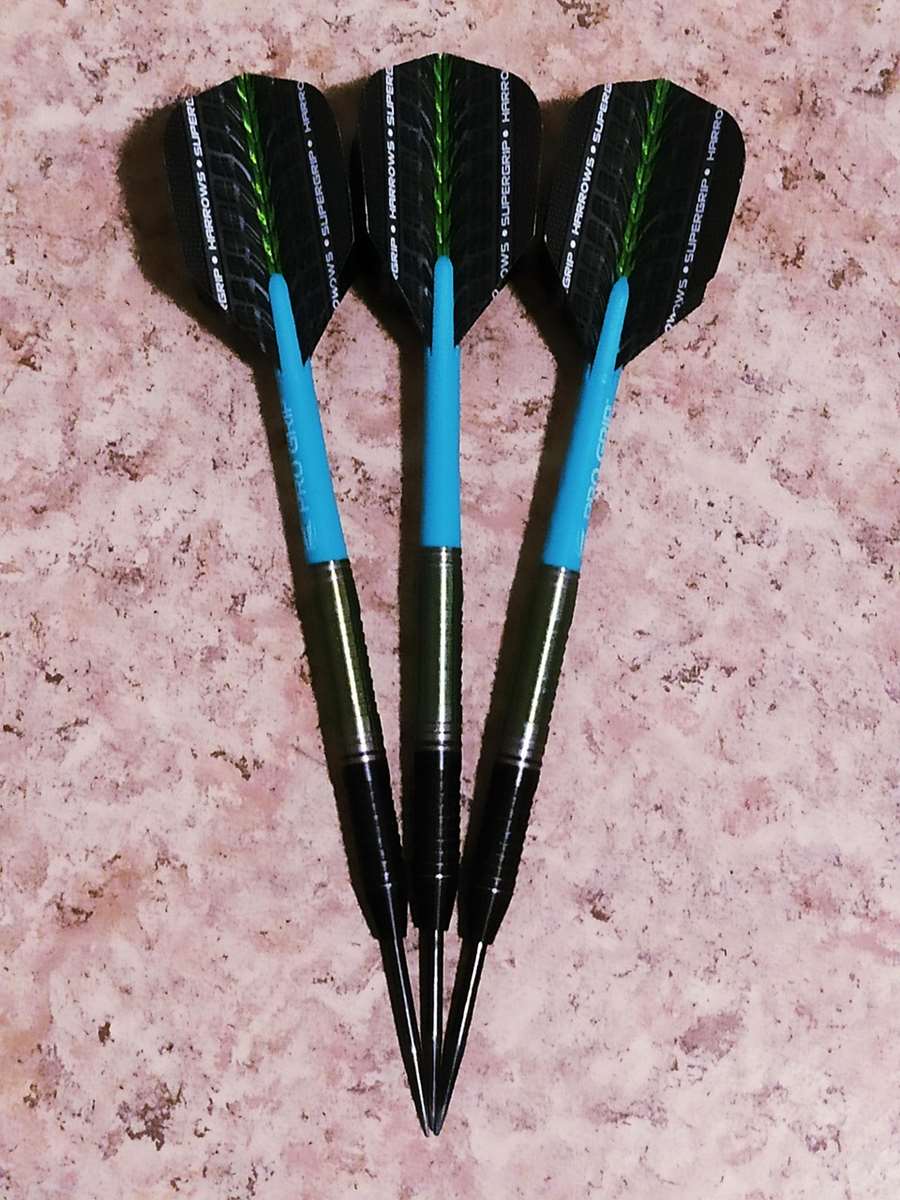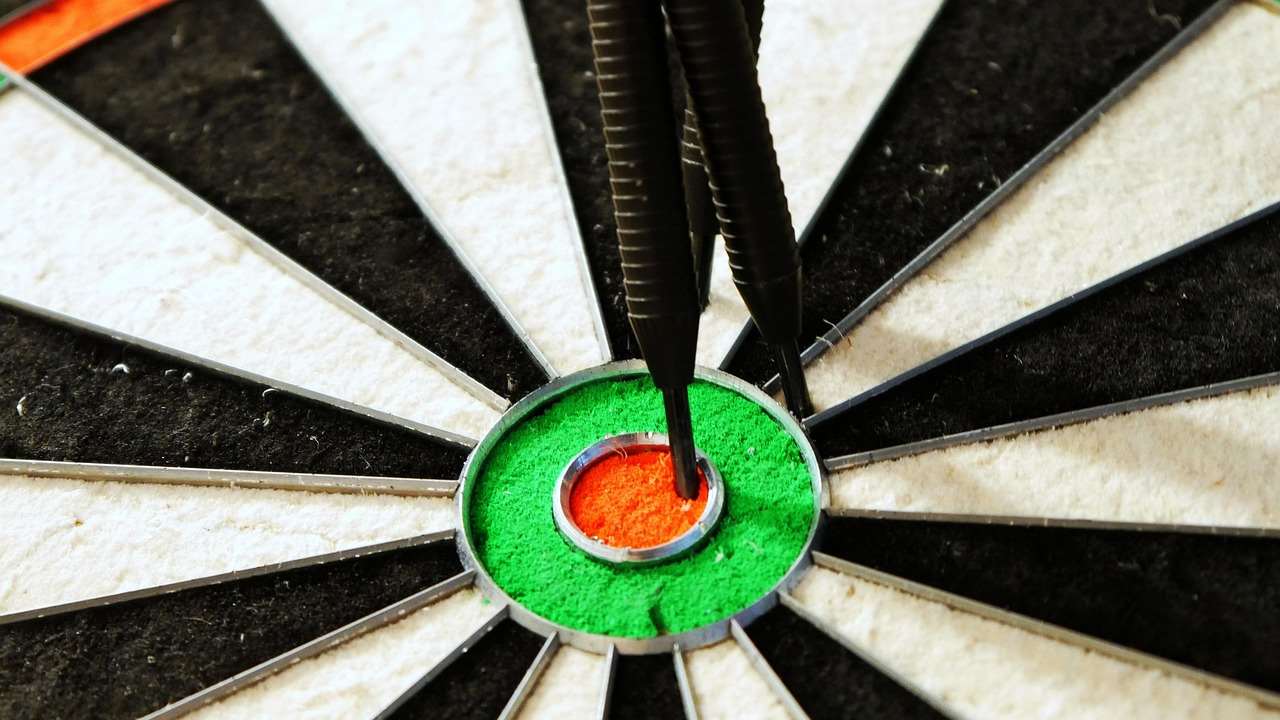Understanding Simplified 501 game rules for novice players is easier than you think! This guide breaks down the classic dart game into manageable steps, so you can quickly grasp the scoring system and start playing confidently. We’ll cover everything from setting up the dartboard to understanding winning strategies, making you a 501 pro in no time.
⚠️ Still Using Pen & Paper (or a Chalkboard)?! ⚠️
Step into the future! The Dart Counter App handles all the scoring, suggests checkouts, and tracks your stats automatically. It's easier than you think!
Try the Smart Dart Counter App FREE!Ready for an upgrade? Click above!
Understanding the Basic 501 Game Rules for Novice Players
The game of 501 is a staple in the world of darts. While it may seem daunting at first, mastering the simplified 501 game rules for novice players is quite straightforward. It’s a great way to improve your dart throwing accuracy and enjoy some friendly competition. The goal is simple: be the first player to reduce your score from 501 to exactly zero.

Essential Equipment and Setup
Before you can start playing 501, you need the right equipment and setup. This includes:
- A standard dartboard: Ensure it’s regulation size and made of sisal fibers.
- Darts: A set of darts suitable for your grip and throwing style.
- A throw line (oche): This line is typically 7 feet 9 1/4 inches (2.37 meters) from the face of the dartboard.
- A scoreboard: To keep track of each player’s score. You can use a whiteboard, a chalkboard, or even a dedicated dart scoreboard.
Proper setup is critical for fair play and preventing injuries. Make sure your dartboard is securely mounted on the wall, following the instructions provided with the board. You can find some Basic Darts Fundamentals for Beginners here.
Starting the Game: Establishing the Throwing Order
Once everything is set up, you need to determine the throwing order. There are a few common methods for doing this:
- Coin toss: A simple and fair way to decide who goes first.
- Diddle for the middle: Each player throws one dart at the bullseye. The player whose dart lands closest to the center gets to go first. If both darts land in the same ring, repeat the process.
- Agreement: Players can simply agree on who goes first, especially in casual games.
Simplified 501 Game Rules: A Step-by-Step Guide
Now, let’s dive into the core simplified 501 game rules for novice players. The gameplay is structured into rounds, with each player throwing three darts per round.
Calculating Your Score
Each section of the dartboard represents a different score. The outer ring doubles the value of the section, while the inner ring triples it. Here’s a quick overview:
- Single numbers: Values range from 1 to 20.
- Doubles: The outer ring, doubling the value of the number.
- Triples: The inner ring, tripling the value of the number.
- Bullseye: The outer bullseye is worth 25 points, and the inner bullseye (double bull) is worth 50 points.
After each round, you add up the scores of your three darts and subtract the total from your remaining score. This calculation must be accurate to avoid confusion and disputes.

The Importance of a “Double Out”
One of the most important aspects of 501 is the “double out” rule. To win the game, you must finish by hitting a double or the bullseye. This means your final dart must land in the double ring or the bullseye, bringing your score down to exactly zero. For example, if you have 32 points remaining, you need to hit the double 16 to win. Without hitting a double or bullseye to finish, your turn ends and your score remains the same. This rule adds a strategic element to the game, requiring players to set themselves up for a double out.
Busts and Invalid Turns
A “bust” occurs when your score goes below zero or ends at one. In this case, the turn is invalid, and your score reverts to what it was at the start of that turn. For example, if you have 20 points remaining and you hit a single 20, resulting in a score of 0, and you didn’t use a double to reach 0, this is a bust because you failed to “double out”. Similarly, if you have 2 points left and you hit a single 3, your score goes to -1, resulting in a bust. Understanding busts is crucial for playing strategically and avoiding wasted turns.
Strategic Tips for Novice Players
While mastering the simplified 501 game rules for novice players is the first step, developing a strategy can significantly improve your game. Here are some tips to help you:
Aiming for High Scores
In the early stages of the game, focus on scoring as many points as possible. Aim for the 20 segment, as it offers the highest single-number score. Hitting triples in the 20 segment can quickly reduce your score. Consistent practice on the 20s will give you a significant advantage.

Setting Up Your Double Out
As you approach the end of the game, start thinking about setting yourself up for a double out. Leave yourself with an even number that can be hit with a double. Common double-out numbers include 32 (double 16), 40 (double 20), and 18 (double 9). Planning ahead is crucial for a successful finish.
Practicing Your Doubles
Mastering your doubles is essential for winning 501. Spend time practicing hitting different doubles, particularly the ones you are most likely to need for a double out. Consistency in hitting doubles is what separates experienced players from beginners.
Adapting Your Strategy
As you play more games, learn to adapt your strategy based on your opponent’s performance. If they are scoring consistently high, you might need to take more risks to catch up. If they are struggling, you can play a more conservative game and focus on hitting your doubles.
Common Mistakes to Avoid
New players often make common mistakes that can hinder their progress. Being aware of these pitfalls can help you improve more quickly. Here are a few examples:
- Poor Stance: A shaky or unbalanced stance will affect your accuracy. Stand comfortably with one foot slightly in front of the other.
- Rushing Your Throw: Take your time and focus on your aim. Rushing will lead to inconsistent results.
- Ignoring the Scoreboard: Always keep track of your score and plan your next move accordingly.
- Not Practicing Regularly: Like any skill, darts requires practice. Set aside time to practice regularly to improve your technique.
Remember, consistent practice and attention to detail are key to becoming a proficient darts player. Understanding How to make darts fairer with handicap rules can also be beneficial.
Variations and Adaptations of the 501 Game Rules
While the standard 501 game rules are widely followed, there are some variations and adaptations that can make the game more interesting, especially for novice players or mixed-skill groups.
Simplified Scoring for Beginners
For very young or inexperienced players, you can simplify the scoring system. For example, you could ignore the doubles and triples rings initially, counting only the single-number values. This allows players to focus on hitting the board and aiming for specific numbers without the added complexity of the multiplying rings.

Team Play
501 can also be played in teams. Each team member takes turns throwing three darts, and their scores are combined. This is a great way to encourage teamwork and make the game more social.
Handicap Systems
To level the playing field between players of different skill levels, you can use a handicap system. The stronger player might start with a higher score (e.g., 601 or 701), while the weaker player starts with the standard 501. Alternatively, you can give the weaker player extra throws or allow them to finish on any number instead of requiring a double out.
Practicing and Improving Your Dart Skills
To truly master the simplified 501 game rules for novice players, consistent practice is essential. Here are some drills you can use to improve your accuracy and consistency:
Target Practice
Focus on hitting specific numbers, such as the 20, 19, and doubles. Set yourself a target (e.g., hit the 20 with at least one dart out of three) and keep practicing until you consistently achieve it. This will improve your overall aim and control.
Double Practice
Spend dedicated time practicing your doubles. Start with the easier doubles, such as double 20 and double 10, and gradually work your way up to the more challenging ones. Try to hit each double multiple times in a row to build consistency.
Checkout Drills
Practice finishing the game from different scores. For example, start with 40 points remaining and try to check out in one turn (double 20). Then, move on to other common checkout scores, such as 32 (double 16), 50 (double bull), and 60 (double 20, single 20). You can also try playing with fun dart game variations with modified rules to keep things interesting.

Conclusion: Mastering the Simplified 501 Game Rules
Learning the simplified 501 game rules for novice players is the perfect entry point into the world of darts. By understanding the scoring system, practicing regularly, and employing strategic thinking, you’ll quickly progress from a beginner to a confident player. Remember to focus on your technique, practice your doubles, and adapt your strategy as needed. With dedication and persistence, you’ll be hitting those doubles and checking out like a pro in no time! Now that you have a good grasp of the basics, grab your darts, set up your board, and start practicing! For further information about adapting the rules, check out adapting darts rules for beginners.
Hi, I’m Dieter, and I created Dartcounter (Dartcounterapp.com). My motivation wasn’t being a darts expert – quite the opposite! When I first started playing, I loved the game but found keeping accurate scores and tracking stats difficult and distracting.
I figured I couldn’t be the only one struggling with this. So, I decided to build a solution: an easy-to-use application that everyone, no matter their experience level, could use to manage scoring effortlessly.
My goal for Dartcounter was simple: let the app handle the numbers – the scoring, the averages, the stats, even checkout suggestions – so players could focus purely on their throw and enjoying the game. It began as a way to solve my own beginner’s problem, and I’m thrilled it has grown into a helpful tool for the wider darts community.